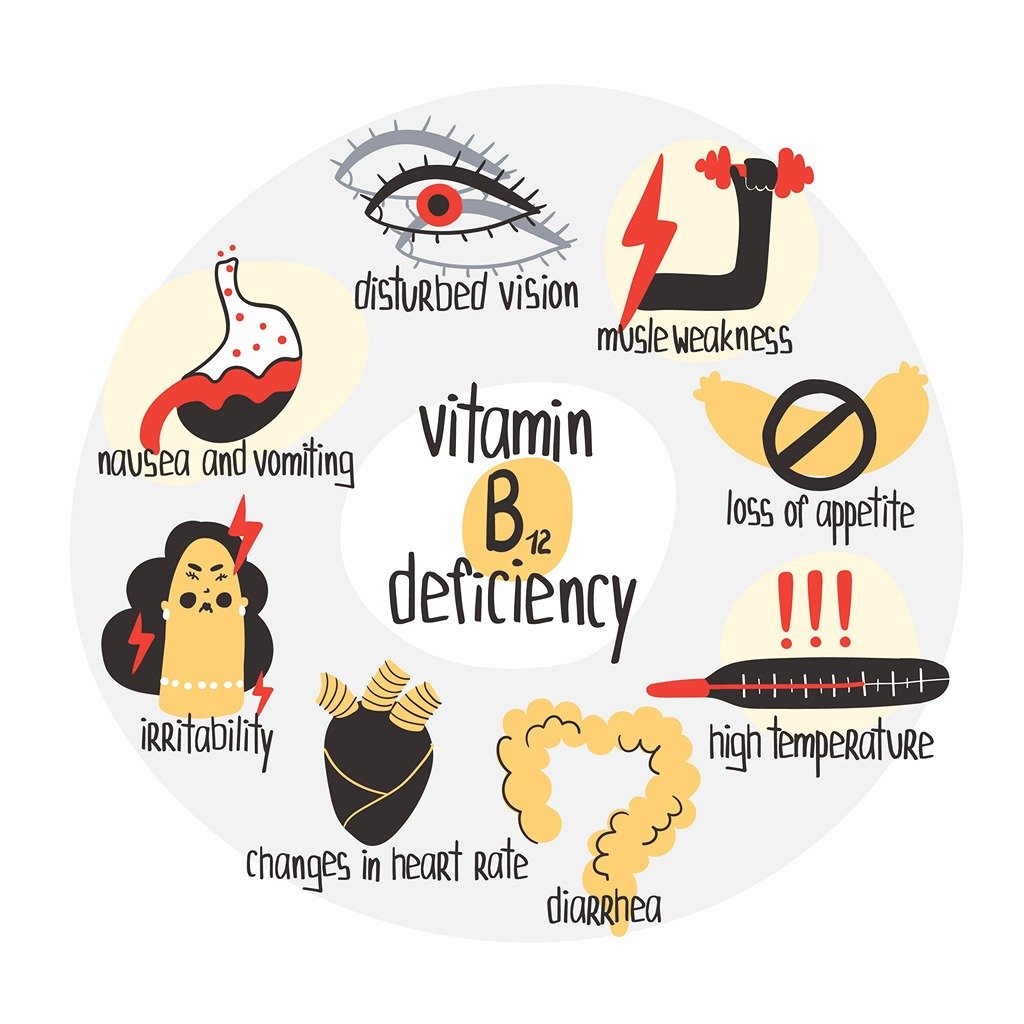Vitamin B12: past and present by Simon Tapley, RD

Vitamin B12, or cobalamin, is an indispensable nutrient involved in DNA synthesis, red blood cell production, metabolism of amino acids
and neurological function. Despite its critical role, deficiencies are common, particularly in vulnerable populations. Specialist Adult IMD Dietitian, Simon Tapley, RD, delves into the discovery of B12, the role of intrinsic factor and a little bit of biochemistry behind this
incredible, essential nutrient.
Two Nobel Prizes and counting...
The discovery of vitamin B12 was a landmark achievement in nutritional science. In the early 20th century, pernicious anaemia was a fatal disease with no effective treatment. In the 1920s, George Whipple found that feeding liver to dogs with anaemia restored their red blood cell count, laying the groundwork for human studies.
In 1934, Whipple, Minot, and Murphy were awarded the Nobel Prize for their work when they moved from dogs to people , feeding them liver, sometimes raw. However, the active compound in liver responsible for the resolution of pernicious anaemia remained unidentified for over a decade.
In 1948, two independent research teams led by Karl Folkers and Alexander Todd isolated vitamin B12. Dorothy Hodgkin later used X-ray crystallography to determine its molecular structure, earning her the Nobel Prize in Chemistry in 1964.
Intrinsic factor: The key to B12 absorption
As if raw liver wasn’t enough, imagine being in the study, failing to recover from pernicious anaemia, despite the raw liver diet, only to be told they have another idea: to ask one healthy participant to regurgitate the liver and then give it to you through a nasogastric tube. Perhaps William Castle should have been given the Nobel prize for the science of persuasion. Fortunately for the participant, it worked and the theory of an intrinsic and extrinsic factor was confirmed.
Later studies confirmed that intrinsic factor, a glycoprotein secreted by gastric parietal cells, binds to vitamin B12 and facilitates its absorption in the ileum. Deficiency of intrinsic factor, whether due to autoimmune conditions or gastric surgery, results in malabsorption and pernicious anaemia.
BACTERIAL ORIGINS
Vitamin B12 is uniquely synthesised by bacteria found in soil, water and the gastrointestinal tracts of animals. Humans obtain B12 through animal-based foods, such as meat, fish, eggs and dairy, as these sources concentrate the nutrients. Despite its bacterial origins, B12 is absent in plant foods unless contaminated or fortified, highlighting the risk of deficiency in plant-based diets. Synthetic B12, used to fortify foods such as plant milks, cereals and nutritional yeast, is highly bioavailable. A debate is ongoing around whether shitake mushrooms, nori and chlorella could provide adequate B12 naturally secondary to symbiotic bacteria. However, variability in analysed B12 content, presence of pseudovitamin B12 and the significance of different preparation methods deem these foods to be unreliable as sole sources of B12 at present.
Requirements and deficiency

The RDA for vitamin B12 in adults is 1.5 micrograms, with higher needs during pregnancy and lactation. However, it is recommended that those following a plant-based diet should aim for 3mcg. People on vegan diets should consume fortified foods twice daily or take a daily supplement of 25-100 micrograms due to variability in absorption. For individuals with absorption issues, such as those with atrophic gastritis or post-bariatric surgery, sublingual or injectable B12 is recommended.
Prolonged B12 deficiency leads to megaloblastic anaemia, presenting with fatigue, pallor and weakness. Neurological complications, such as peripheral neuropathy, cognitive decline, and irreversible nerve damage, are critical concerns. In pregnancy, B12 deficiency increases the risk of neural tube defects and developmental delays in offspring.
Diagnosis of vitamin B12 deficiency typically involves serum B12 testing, though functional markers such as methylmalonic acid (MMA) and homocysteine levels provide greater accuracy, particularly in borderline cases.
Unusual presentations
Inherited Metabolic Disorder clinics often see people with raised homocysteine levels due to deficiency of the enzyme cystathionine beta-synthase However, patients have presented to clinic largely immobile and with raised homocysteine levels due to frequent recreational use of nitrous oxide.
Vitamin B12 normally acts as a methyl donor in the metabolism of homocysteine back into methionine. However, nitrous oxide can oxidise the cobalt ion in B12 rendering it inactive. Cessation of nitrous oxide use and high-dose vitamin B12 resolved this relatively quickly.
The NICE guideline (NG239) Vitamin B12 deficiency in over 16s: diagnosis and management (March 2024) now refers to nitrous oxide use as a potential risk factor in diagnosis.
Conclusion
The history of vitamin B12 reflects a remarkable journey of discovery, from Nobel Prize-winning research to lifesaving treatments for pernicious anaemia. For dietitians, understanding the complexities of B12 absorption, sources and deficiency prevention is essential for optimising patient care.
With the growing prevalence of plant-based diets, proactive monitoring and evidence-based supplementation strategies are more critical than ever.

Simon is working in IMD at University Hospitals Bristol and Weston, having previously specialised in Gastroenterology and Neurology.

Comments